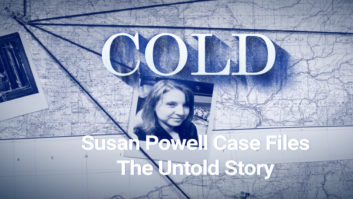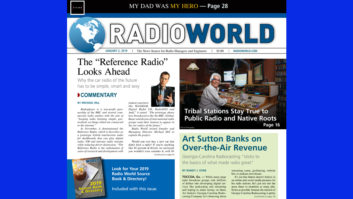Consensus from those who measure trends is that audio consumption is up!

C’mon … this has gotta be cause for celebration for the radio industry. Haters will be quick to point out that consumption is being fueled by streaming services like Spotify, combined with the still-emerging — but assumed to be ubiquitous — smart speaker.
The takeaway I’d like to address concerns the proliferation of on-demand content and the soaring growth of smart speakers. These two items — content and distribution — are always connected, but radio stations don’t think too much about the latter because we have wide-reaching broadcast signals.

I am a huge fan of commentator Bob Lefsetz, who points out that distribution, not content, is actually king. You can make the most wonderful movie ever, but if you can’t get it into theaters or on a major streaming service, few people will see it. My proposition is that radio is not an exception to this rule.
Nielsen reports on-demand audio streaming up 45 percent year over year. As you might expect, the proliferation of podcasts — and the listening audience that connects to them — also continues. Edison Research indicates that monthly podcast listeners grew from 24 percent of Americans 12+ to 26 percent year over year. And yes, listening of podcasts in vehicles is growing as well.
JUMPING ON THE ON-DEMAND BANDWAGON
Seeing this growth in on-demand, what’s a broadcast radio station to do?
If it’s about immediate profit, there is no question that you should stay away from on-demand audio. Creating highly entertaining/informative podcasts and streaming on smart speakers each requires investment without immediate return.
On the other hand, if you want to stay relevant — not just for the future but in the present — radio stations don’t have much choice. The more places in which people can listen to your product, the better the chances that they will actually do so. If you’re not present on a smart speaker, on an app and streaming via a website, you’re not covering your bases.
Fence-sitters will be bested by competitors — not just radio stations, but by other streamers who are flooding the marketplace. While broadcast stations still have the advantage of large mass audiences, we must promote our own on-demand content, whether that’s a live stream, podcasts or both.
Who should be the best at creating the best on-demand audio? It’s us — the radio industry. We know how to find talent. We know how to structure talk and news shows. And we certainly know how to tell stories, create characters and set up actual plots.
And what are we not good at? It’s a list just as long: patience, investing in the future, taking risks and two things that are small but important: repurposing our own content and fully utilizing our talent.
The barrier to becoming a podcaster is extremely low, so most podcasts are not good. It’s often a group of people laughing at inside jokes or taking forever to get to a not-so-interesting point. Typically, the host has little experience and can’t even hear how self-indulgent they sound. The appearance on the scene of so many badly-done podcasts should show us that there is still plenty of room for quality shows.
I’m all in for original content creation. Surely you’ve got creative people on staff who are ready to give fame a whirl. Local fame is great! A podcast listened to by thousands in a small town can have an amazing impact.
You’re looking for themes or plots that can pass what I call the Jerry Seinfeld test. Any of Jerry’s shows can be described in one sentence, such as, “Jerry, Elaine, George and Kramer, each suffering a time-sensitive issue, can’t remember where they left Kramer’s car in the enormous parking garage of a shopping mall in New Jersey.” If you can’t describe a podcast in one sentence, it’s not worth even starting.

Radio stations already make quite a bit of content that isn’t being “versioned” properly for podcasting. Stations are notorious for taking an entire morning show and putting it up as a podcast. That’s fine when shows are exceptional, but it’s the rare talent who can be entertaining for four solid hours. Much better to have a savvy editor create a better show for on-demand use that’s of reasonable and consistent length.
When technology introduces a “utility” that by definition is user-instant, we must pay attention. Turn on a lamp and in one second you get light. Turn on a radio and you get audio. Turn on a speaker and your house comes alive with on-demand audio.
Flip the switch and turn on the light!












